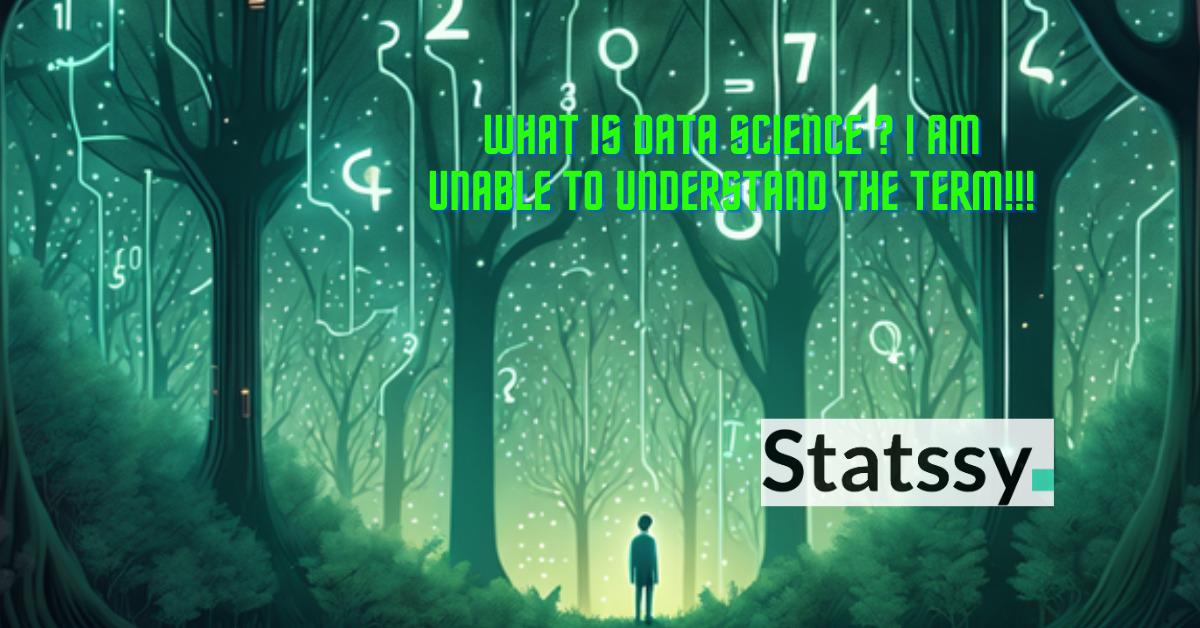What is data science ? I am unable to understand the term!!!

What is data Science ?
Are you confused about the term data science?? I was too when I started. But don’t worry I will help you to understand it with a simple example.
Data science is a special way of looking at data like numbers and facts which you learnt in school. It is a set of techniques which assist you to look at data from a perspective not visible to a normal person. For example imagine you went to a jungle safari and landed up in front of a cave.
Now you are standing there and admiring the beauty of the cave. But thousands of questions rushed through your mind like
1) Who made this cave?
2) How old is this cave?
3) Do people ever live inside this cave?
4) Why is it made here?
Since you are not an expert in cave making, it is difficult for you to help yourself.
Imagine suddenly an archeologist saw you standing and decided to help you out. She told you that this cave was made in the stone age because she can see paintings in the cave that show the stone age.
It was made by a man of height 10m because its height is 10m and people didn’t have stairs back then. Also people used to live here during rain and winter because she found high temperatures inside the cave.
Now you and the archeologist both were standing there but since she was expert in her domain, she answered your questions. Wondering what she did?
She looked at different types of data points such as rock, paintings, temperature etc to answer most of your questions.
Now imagine if the shop owner asked you to find out exactly how many pizzas of each type will be sold in the next 3 months and you answered her questions using data of pizza lovers in the locality combined with her past 5 years sales and competitor’s sales? Congratulations! You just now become a data scientist.
So what exactly happened just now?
If you use not very complex data and find the insights that on each day of week, how many pizzas are being sold, you are working as a data analyst. But if you use very complex data from multiple sources and make future predictions, you are working as a data scientist. However, these two roles quite overlap but being a data scientist requires you to do this entire activity in some programming language while as a data analyst you may do it in basic spreadsheet tools
So let’s redefine what data science is. It is a field that involves mathematical, statistical and computational techniques to extract knowledge and insights from data. It includes a range of skills including data collection, data cleaning, data processing and generating insights from the data and finally communicating those insights. This field is not a standalone file but incorporates knowledge of statistics, computer science, domain of expertise to gather and analyse data to generate insights. Lets see some common examples
1. Data Science in Healthcare Domain
A doctor can use data from a large number of patients to find that if the patient has fever and her nails are blue, it is likely to be the flu. Doctors found this after analysing hundreds of patients. But you as a data analyst can find this if you have access to each patient record
2) Data Science in Finance Domain
An investor wants to find out what is the top performing stock in a year. THe investor took data of all stocks and calculated stock with maximum percentage return. This is a very simple case of applying data science.
3) Data Science in Marketing
A marketeer ran five advertisement campaigns and wants to compare each of them. After analysing data of all campaigns she found that return on investment for Campaign A is highest while the most economical campaign (where they reach maximum customers at minimum cost) is Campaign B. Now she will have choices to select either most return on investment or most reach the next time she runs ads.
I hope you have now understanding of the data science and we will expand upon these points into the next discussion. Data Science Course

